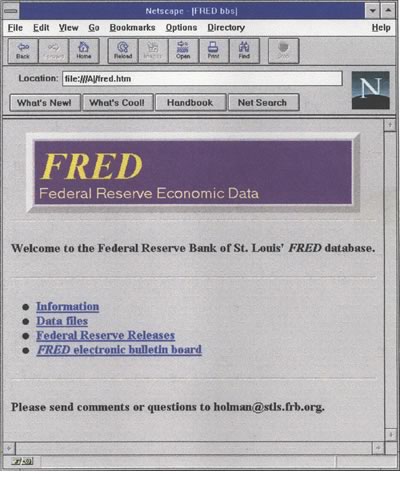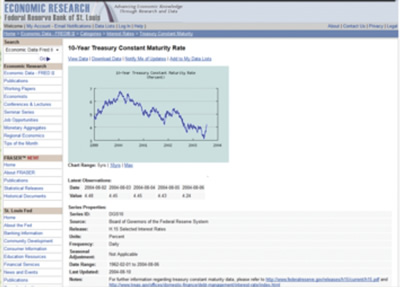The History of FRED
FRED and Family
No history of the Federal Reserve Bank of St. Louis would be complete without an entry—or chapter—on its leadership in providing economic data for the masses. From simple beginnings about 20 years ago, Federal Reserve Economic Data, or FRED, has come to be known around the world by people who care about the numbers driving today's economies.
FRED is a descendent of the data publications created by Homer Jones, who was the research director of the St. Louis Fed from 1958 to 1971. Jones was a proponent of making economic data widely available. His goal was to provide information not just to policymakers but to members of the public—information that would allow them to judge for themselves the state of the economy and the outcome of policy.
The technology of the time was paper, so the data were printed and sent out via the U.S. postal system. Employees from the 1970s and 1980s have said there was intense pressure to get the main data publication—the weekly U.S. Financial Data (USFD), still popular today—out on Thursday afternoons. Reporters were constantly calling, asking for the numbers so that they could publish them in the next day's newspaper. The St. Louis Fed would also get calls from economists, students and college professors, among others. 1
These paper data publications translated well to online posting. FRED got its start in 1991 as a free electronic bulletin board (a precursor to the Internet) and offered "free up-to-the-minute economic data via modems connected to personal computers," 2 providing data from the USFD. The response was described as "staggering" and "overwhelming." 3 Initially, FRED had 620 users who were given access to 30 data series that could be downloaded at a modem speed of up to 14.4 kilobits per second.
Because users were limited to one hour a day, they were advised to read the instructions in advance to make the most of their time. Eventually, data series from other St. Louis Fed publications were added, with FRED housing more than 300 series in 1993.
The next innovation for FRED was moving to the Internet in 1995. FRED contained 865 data series by then, and the site was accessed an average of 6,000 times per week. At the time, there were only an estimated 12 million people on the Internet. So that at least some employees could experience FRED, the St. Louis Fed granted access to a computer located in a special Office Computing Services area. The computer provided a window to the Internet, but only for employees who had a business need.

FRED in 1996
By November 2010, FRED had expanded to more than 24,000 data series, which included more than 21,000 regional data series. Today, FRED has more than 236,000 regional, national and international economic data series, with the data coming from more than 60 reporting agencies around the world. It operates on a high-speed Ethernet service (with download speeds in the millions of bits per second), provides sophisticated graphing software, is available via apps on smartphones and tablets, can be mapped, is accessible via Excel and is used in classrooms all over. What began as a simple, printed data publication has grown into a sophisticated and successful vehicle for sharing important economic data with anyone around the world.

FRED in 2006
ENDNOTES
- Interview with employee Pam Hauck, Federal Reserve Bank of St. Louis, June 21, 2012.
- "Introducing FRED ..." Federal Reserve Bank of St. Louis Eighth Note, May/June 1991.
- Ibid.


